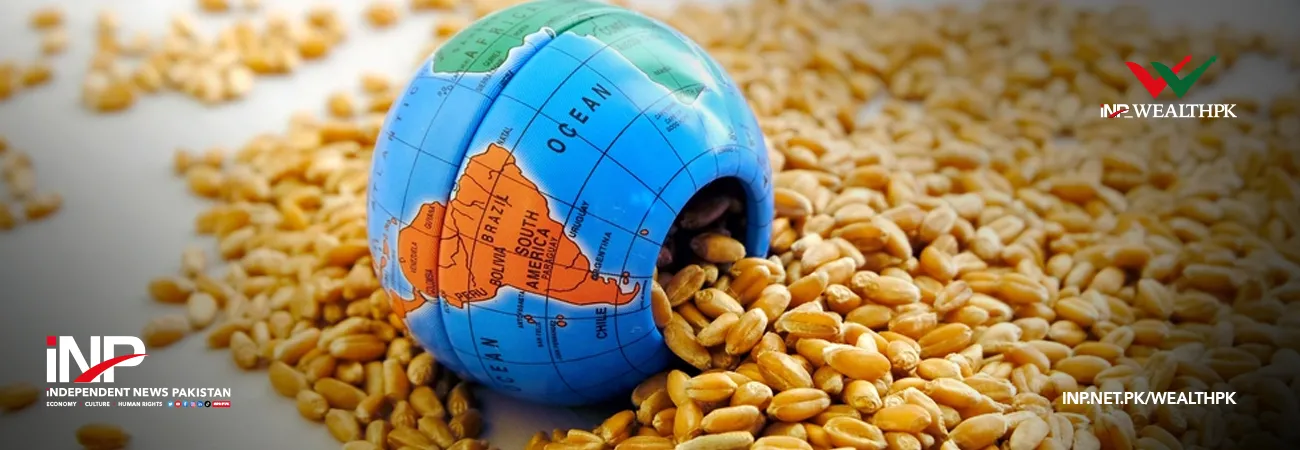INP-WealthPk
Qudsia Bano
The fourth plenary session of the 20th Central Committee of the Communist Party of China (CPC), held in October 2025, placed rural revitalization and agricultural modernization at the centre of the country’s development agenda for the 2026–30 period, reports Wealth Pakistan. The session underscored that agriculture, rural areas, and farmers remain the foundation of national rejuvenation, and reaffirmed a long-term vision in which rural modernization is pursued in a coordinated and balanced manner.
This agenda highlighted improving the spatial layout of national development, promoting integrated urban–rural progress, and supporting rural infrastructure and public services so that people in the countryside enjoy a better quality of life. The session made clear that the next five years will be crucial for advancing agricultural quality, efficiency, and resilience. China plans to strengthen key rural industries, protect farmland, promote technological advancement in farming, and encourage innovation in modern production systems.
It also stressed that rural revitalization must be comprehensive: strengthening governance, improving living environments, enhancing local development capacity, and ensuring that reforms directly benefit farmers. The Chinese leadership has repeatedly emphasized that improving the well-being of rural communities is inseparable from the country’s broader modernization. Stability, prosperity, and national development depend heavily on the strength and vitality of rural regions.
For Pakistan, which faces persistent challenges in agricultural productivity, rural poverty, fragmented land usage, and inadequate rural infrastructure, China’s agenda presents a relevant set of lessons. Pakistan’s agriculture sector has long operated below potential due to outdated farming practices, water mismanagement, limited mechanization, and weak value chains. Rural communities remain underserved in essential services, and the gap between urban and rural living standards continues to widen.
A rural development model that integrates infrastructure upgrades, agricultural modernization, and rural welfare, similar to China’s approach, could provide a more comprehensive path forward. China’s commitment to strengthening rural public services, modernizing governance, and improving living environments is particularly relevant for Pakistan. Widespread rural-to-urban migration, which strains cities and destabilizes villages, is often driven by the absence of basic facilities in rural areas.
Strengthening rural schools, healthcare, transport connectivity, digital infrastructure, and local administrative capacity would directly support Pakistan’s agricultural reforms by giving farmers the environment needed to thrive. China’s model also emphasises coordinated planning across regions and ensuring that development is not concentrated only in urban centres. Pakistan, with its stark regional disparities, could benefit from a similar spatial and regional development framework that distributes economic opportunity more evenly.
Another significant lesson comes from China’s focus on raising farmers’ incomes and linking them directly to modernization policies. Rather than viewing rural policy as a set of subsidies or temporary relief measures, China is working toward transforming rural industries, enabling farmers to participate in more productive, technology-driven agricultural systems.
Pakistan could adopt a similar long-term vision, investing in modern seed development, improving water-efficient farming, strengthening agricultural extension institutions, supporting cooperatives, and encouraging innovation in food processing and storage. Such measures would shift Pakistan from a low-productivity, high-wastage agricultural model to one aligned with modern standards.
Dr. Kamran Siddiqui, Director of the Centre for Agricultural Policy Research at the University of Agriculture Faisalabad, said that China’s rural revitalization agenda demonstrates the importance of viewing agriculture as part of a wider system. According to him, the Chinese plan shows that productivity, infrastructure, governance, and social services must advance together.
He noted that for Pakistan, adopting such an integrated policy framework could resolve long-standing structural problems that piecemeal reforms have failed to address. Dr. Naila Farooq, Senior Research Fellow at the Sustainable Development Institute Islamabad, believes the strongest lesson for Pakistan is the emphasis on improving rural living standards alongside agricultural reform.
She argued that Pakistan has often focused solely on crop output without improving water supply, rural housing, sanitation, or service delivery. China’s model, she observed, offers a blueprint for creating rural environments where economic and social development mutually reinforce one another, ensuring long-term rural stability.
China’s 2026–30 rural revitalization roadmap provides a clear example of how agricultural modernization and rural welfare can move in tandem. If Pakistan draws on these lessons to establish a long-term, coordinated, and farmer-centred rural strategy, it could strengthen food security, improve livelihoods, and lay the groundwork for a more stable and resilient national economy.

Credit: INP-WealthPk












